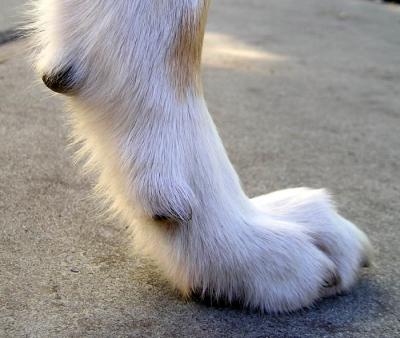

If you do opt for dew claw removal surgery (either for medical reasons or as a result of injury), be sure to follow all of your vet’s post-op instructions, as recovery time may last up to one week For athletic dogs, loose dew claws can also become injured more easily while playing sports or activities (such as agility or fly ball).Īside from the bleeding and being an overall painful and unpleasant experience for your dog, dew claw injuries aren’t too serious. For example, they have the potential for getting torn if the nail catches on something (e.g., if the dog is running through rough terrain or a heavily wooded area). These looser types of dew claws often create anxiety for pet owners, as they do pose some risk of injury. In some dogs, the dew claws are observed as tightly-held against the paw, whereas they can be loose and floppy on other dogs. Most nail-related injuries are not only painful, but prone to infection. Your dog’s nails can become partially or completely split, broken, pulled off, ingrown or infected if not properly trimmed, including his dew claws. Although dew claw injuries are fairly rare, they can still occur. In the active dog there is a risk of damage to the dew claw.
BROKEN CRACKED DEW CLAW DOG PROFESSIONAL
If you need professional assistance trimming or maintaining your dog’s dew claws or have questions concerning their care, always consult with your veterinarian or professional dog groomer. In the majority of cases, it’s unnecessary to remove your dog’s dew claws unless otherwise recommended by your veterinarian for medical reasons.Īs long as you maintain your dog’s dew claws on a routine basis to ensure the nails don’t get too long, ingrown or infected, they should not pose any threats to his health or overall well-being.

BROKEN CRACKED DEW CLAW DOG SKIN
However, the purpose of dew claws that are only attached by skin is less clear. In some instances, dew claws to help him climb trees, hold objects better to chew on them, or even climb out of the water if he’s broken through the ice. At high speeds (especially when turning) or on slippery surfaces, the dewclaws provide extra traction while stabilizing his carpal (wrist) joint. When your dog runs, his front feet usually bend to the point where their dew claws come in contact with the ground. That said, a dew claw attached to a dog’s front foot does serve a definite purpose. Do keep in mind that removing dew claws in certain breeds automatically disqualifies them from the show ring, as it is considered a desirable physical attribute by breeders, owners, judges and organizations. Double dew claws are commonly found in breeds such as the Saint Bernard, Great Pyrenees and the Briard. In other instances, there are dogs that might have an extra toe, which is frequently referred to as a double dew claw. In general, dogs who exhibit dew claws have them on their front paws only however some breeds have them on their hind feet, such as Newfoundlands. Dogs have dew claws on front and rear paws. As the dog evolved into a running, hunting creature with extended paws these became superfluous. The dew claw is an inherited feature, originating form 40 million years ago when the ancestors of the modern dog were tree climbers. Here we discuss the reasons you might remove these….

What do you know about your dogs dew claws?


 0 kommentar(er)
0 kommentar(er)
